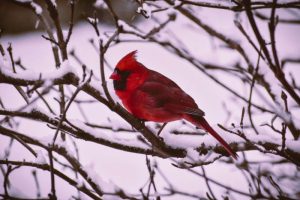 Fall migration is underway. Like many Canadians, a lot of bird species prefer to spend their winters in warmer climes, often for the simple reason that food is more abundant there than it is here.
Fall migration is underway. Like many Canadians, a lot of bird species prefer to spend their winters in warmer climes, often for the simple reason that food is more abundant there than it is here.
Migration is risky business, though, and the move to the food is replete with challenges. First of all, it takes ridiculous amounts of energy to sustain flight for such long periods and huge distances, and feeding birds during their migration could make the difference in their success or failure. This blog post offers tips on feeding birds during this crucial time (Garden Tips: Fall Bird Feeding). If you don’t feed in the summer, now’s the time to get your feeders cleaned up and back outside. We have pole systems, baffles, quality feeders, bird food, and excellent knowledge to help you get the most variety of birds to your garden.
Another challenge that most songbirds migrate at night to stay cooler with the exertion and to be less visible to predators. Migrating at night involves using the stars to assist with navigation, and birds get confused by lights, especially those in high rise buildings. The Fatal Light Awareness Program (FLAP) works to increase awareness about this and encourages people to turn their lights off at night. This blog post and this Garden Gate episode provide information on reducing the chances of birds hitting windows and being hurt or killed.
We’re often asked about hummingbirds at this time of year. Most hummingbirds leave this area for their southern wintering grounds (primarily Mexico and Central America, but also very southern Florida) by mid-September, although there may be a few stragglers into early-October. It’s often recommended that your leave your hummer feeders up for 2-3 weeks after you see the last one in your yard to support straggler migrants.
